IT: The Filmic Kairos of King’s Year and a Zeitgeist of Nostalgia
I teach first-year composition at a regional university in North Carolina, and every semester, I cover the concept of kairos. I introduce kairos to my students with the traditional translation of “opportune time” or “propitious time for action” in order to connect it to the delivery of an argument, and to connect to the modern media environment, we usually draw on the example of Macklemore and Ryan Lewis’s song “Same Love” that blew up in 2013. This is the point in our lesson where I boil the term down the, somewhat dated, common phrase “the perfect storm.” 2013 was the perfect storm for “Same Love” because it was quickly following on the heels of the national legalization of same-sex marriage, a cultural shift in the hip-hop genre that was beginning to blur gender lines, and Macklemore’s personal success with the ear-worms “Thrift Shop” and “Can’t Hold Us.” Drawing on hip-hop is a guilty pleasure for myself as a hip-hop head, and the generation of students that I work with seem to love it, but the real lesson is that the success of a text largely depends on the composer’s sense of timing – their ability to ride the storm.
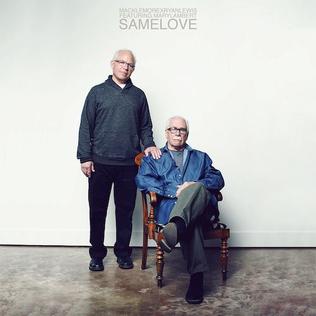
2017 formed the perfect storm for part one of Stephen King’s IT. King captured the most kairotic moment to release the latest adaption of his 1986 novel that was first translated to the screen in 1990. IT almost quadrupled its estimated budget of $35 million during its opening weekend in the U.S., grossing over $326 million worldwide and, most likely, making King a very happy man (IMDb). On the surface, IT appears to be a fairly mediocre horror film with no remarkable innovations for the genre and some serious pacing issues in the first half, making its runaway success a question mark, but when you take into consideration the media landscape surrounding its release, the success becomes marginally clearer. King’s fixation on the screen in 2017 coupled with the developing zeitgeist of late 20th century nostalgia that was accelerating in the 2010s formed a perfect storm behind IT that pushed the film to earn the accolades of largest horror movie opening and largest September opening by doubling the previous records (IMDb).
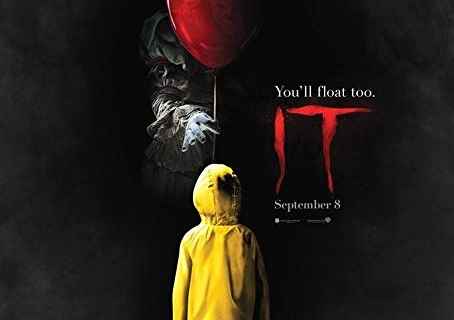
King’s Year
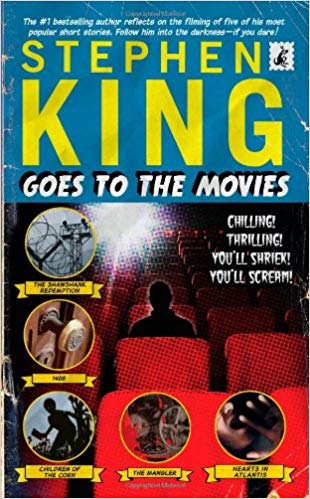
Stephen King’s love of cinema is a subject he isn’t shy of discussing in interviews and on social media, and his adaptations to the screen have been so prolific that he published a book of short stories with small interjections of personal opinions about their film counterparts titled Stephen King Goes to the Movies in 2009. This collection only covers five of the thirty-six film adaptations he had at the time, and he would see five more cinematic versions of his stories until IT hit theaters in 2017. Coincidentally, the time between King’s collection of filmic musings and the next film adaptation in 2013 would be the longest wait for King fans since filmmakers started picking up his stories in 1976. It’s even more ironic that the 2013 film would be Carrie, the same story that launched King’s experience with the big screen. Alongside silver screen adaptations, twenty-one of King’s stories would appear on television as limited series’, recurring shows, and made-for-TV films until 2017 when King would start to see a renaissance for his work in various media.
The year IT released would be King’s most fruitful in terms of releases and scheduled productions. An adaptation of The Dark Tower would accompany IT as a theatrical release while film-length adaptations of Gerald’s Game and 1922 would stream on Netflix. The Dark Tower released in July, capitalizing on the massive fan-base of the book series that is often referred to as King’s magnum opus, but it quickly flopped, holding a 16% rating on Rotten Tomatoes, 5.7 on IMDb, and 34% on Metacritic. The source material for the Netflix releases carried less prestige, but they would see a much better reception, holding 90% (6.6 on IMDb and 77% on Metacritic) and 88% (6.3 on IMDB and 70% on Metacritic) on Rotten Tomatoes, respectively. The Mist (RT: 62%; IMDb: 5.4; Metacritic: 54%) and Mr. Mercedes (RT: 93%; IMDb: 7.9; Metacritic: 72%) would find their way to TV screens in the same year. The former suffered after release, but the latter continues to thrive in 2019 as it adapts one of King’s most popular modern trilogies. Castle Rock and The Dark Tower television series’ were also announced in 2017, drumming up a consistent buzz from hardcore King fans that hoped to see the more intricate connections of his fiction played out on the screen. The abundance of cinematic stories in 2017 slowed King’s written work, but he still managed to collaborate on the novel Sleeping Beauties with his son Owen and the novella Gwendy’s Button Box with Richard Chizmar, both of which were well received and served as a signal of sorts for King fans looking to see how his literary influence will continue as he ages.
King followed the trend of pursuing more sophisticated film and television adaptations through streaming services while breaking the traditional novel form through collaborations that many creatives in the late 2010s were enjoying, and he was finding himself in the headlines more often than ever. In September of 2017, during the week of IT’s release, interest for Stephen King’s name abruptly spiked to an all-time high on Google, and the stage was set to continue developing adaptations throughout 2018 to release four movies in 2019 and renew Castle Rock (currently confirmed for two seasons) and Mr. Mercedes (currently confirmed for three seasons) (“Google Trends”). If we are to chase the metaphor of the perfect storm, King’s renewed popularity in 2017 would be the warm air from a low-pressure system, moving to hit the cool, dry air of the nostalgia zeitgeist of the 2010s.
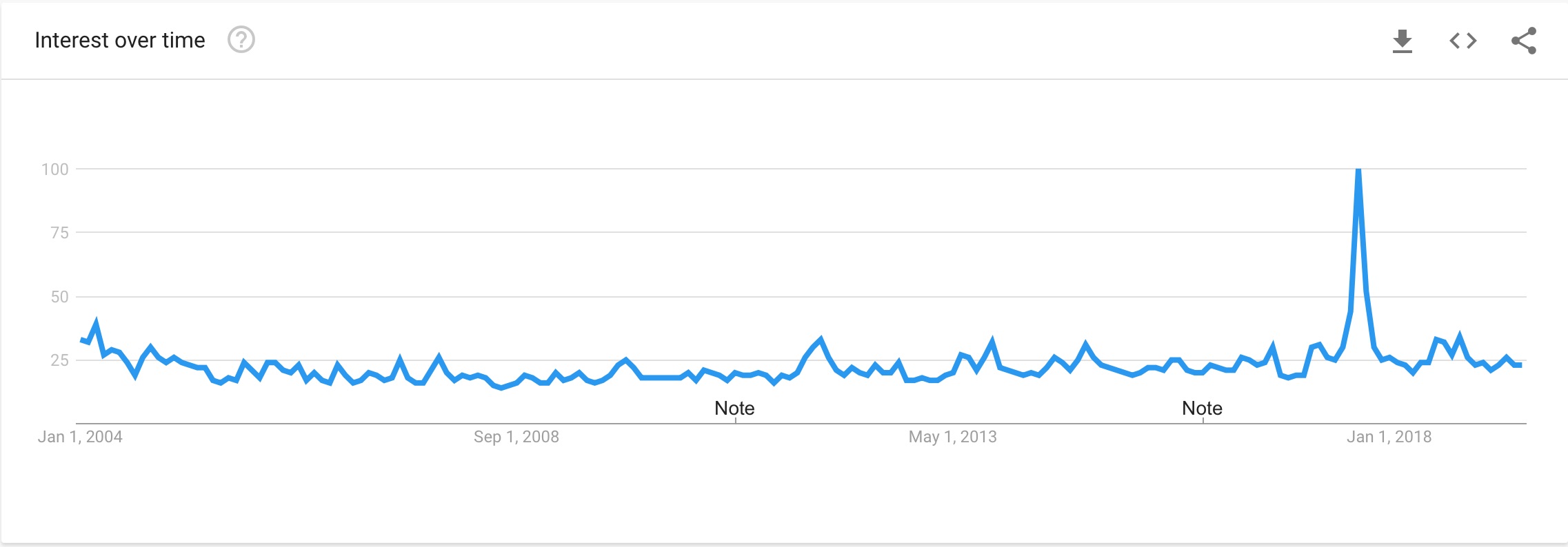
A Zeitgeist of Nostalgia
In order to fully understand how IT (2017) became so successful nearly 30 years after its 1988 setting, it’s necessary to settle a basic understanding of nostalgia. Nostalgia has been heavily studied and debated, but Routledge, et al. manage to compile a insightful summary of the changing definition of the term in their study from 2012, published in the academic journal Memory. They trace our earliest understandings of nostalgia to a pathology experienced by traumatized and displaced peoples that could result in various mental and physical health conditions connected to a longing for home ( Routledge et al. 457). The concept has progressively evolved to be seen as a “resource that enables people to attain and maintain the perception that their lives are meaningful” because it “increases mood, self-esteem, and social connectedness” when it is experienced in most contexts (Routledge et al. 453, 457). The modern understanding of nostalgia has positive potential, and various industries haven taken note and harnessed the feeling in marketing tactics, political persuasion, and entertainment (Tudor). Entertainment outlets are unique in that their repackaging of the past run the gamut between insightful and revisionist, depending on the approach of the studio and the healthiness of the fanbase as can be seen with some criticisms of Mad Men’s glorification of manipulative marketing and the blatantly misogynistic response to the 2016 reboot of Ghostbusters. If we are to consider nostalgia as a tool of meaning-making, we must also recognize the potential to use the tool to distance ourselves from our current reality, locking our perception of the present into a comparison to some inaccurate, long-forgotten ideal of the past – viewing through the rose-colored glasses.
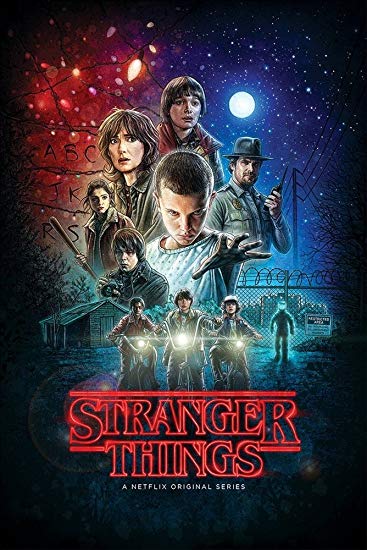
The popularity of nostalgic entertainment is nothing new, but the growth throughout the 2010s is markedly swift with various media constructing narratives embedded in the complexities of the late 20thcentury. Television was struck by the conclusion of the previously mentioned Mad Men and the Goonies-inspired Stranger Things that worked to capture the pizza-fueled, arcade-crazed, Walkman childhood of the ‘80s, both of which delivered on the setting with surgical precision work on props and costumes. Both shows accumulated an overwhelming number of nominations and awards from various institutions, drawing critics and creating fervent fandoms that would continue through the decade. Video games continued to grow into a respected form of story-telling throughout the 2010s with games like Fullbright’s Gone Home that pushed the boundaries of the interactive medium by slowing the gameplay, immersing the player in a visual-novel of sorts that developed its ‘90s setting through interactions with VHS tapes, cassettes, and hand-written letters. Ironically, this title required players to interact with analog media through a digital format as the game was initially only released as a digital download on PC, but it drew positive attention from critics and fans, further establishing the walking simulator genre that has now found a consistent audience among the video game community. Filmmakers heard the call for stories of the late 20th century most prominently, producing numerous representations of the music, fashion, and lifestyles that evoke nostalgia. Super 8 captured a younger audience, emulating The Goonies once again, in 2011 while The Wolf of Wallstreet and Straight Outta Compton targeted the adult businesspeople and hip-hop heads with three-piece suits and the birth of gangsta rap. In the middle, Marvel released Guardians of the Galaxy which owes half of its success to the laughs and the other half to the mix of Blue Swede, Marvin Gaye, The Runaways, and David Bowie that function as an audio history textbook for the ‘80s.
Somewhere in the collective zeitgeist of nostalgia is sweeping through nearly every medium, King found the perfect pocket to release part one of IT, sending the U.S. back to the streets of Derry, Maine in the late ‘80s to confront the killer clown that terrorized audiences with the release of the novel in ’86 and the miniseries in ’90. It’s clear from the opening scene of the film that King intended to take advantage of the loosened constraints of Hollywood to produce a version of the story that is truer to form, delivering gore and capturing the shock and awe tone that was partially lost on the more whimsically unsettling Tim Curry depiction. IT capitalizes on many of the facets of ‘80s culture that resonate with 21st century audiences without being as heavy-handed as Guardians with the soundtrack or Stranger Things with the sound and scene locations. In fact, IT’s setting is very unassuming in that it establishes the ‘80s atmosphere through Gremlins and Beetlejuice posters in Bill’s room, Batman and Lethal Weapon 2 on a theater marquee, and Henry Bowers’s mullet. The most direct references to the decade come in the form of an ongoing New Kids on the Block joke between Bev and Ben, a few tunes by The Cure and The Cult, and a Street Fighter arcade cabinet that Richie bangs on for a quick transitional scene after It returns. Taking a subtle approach separates IT from other titles that depend on nostalgia to draw an audience while still utilizing the appeal of the past to create an environment that is just familiar enough to be relatable but distant enough to remove the security of constant connection through digital technology. The production team likely made these decisions to assist in creating more tension for the narrative, and they also, intentionally or not, created a film that benefited from the nostalgia that has come to define a large part of the 2010s zeitgeist.
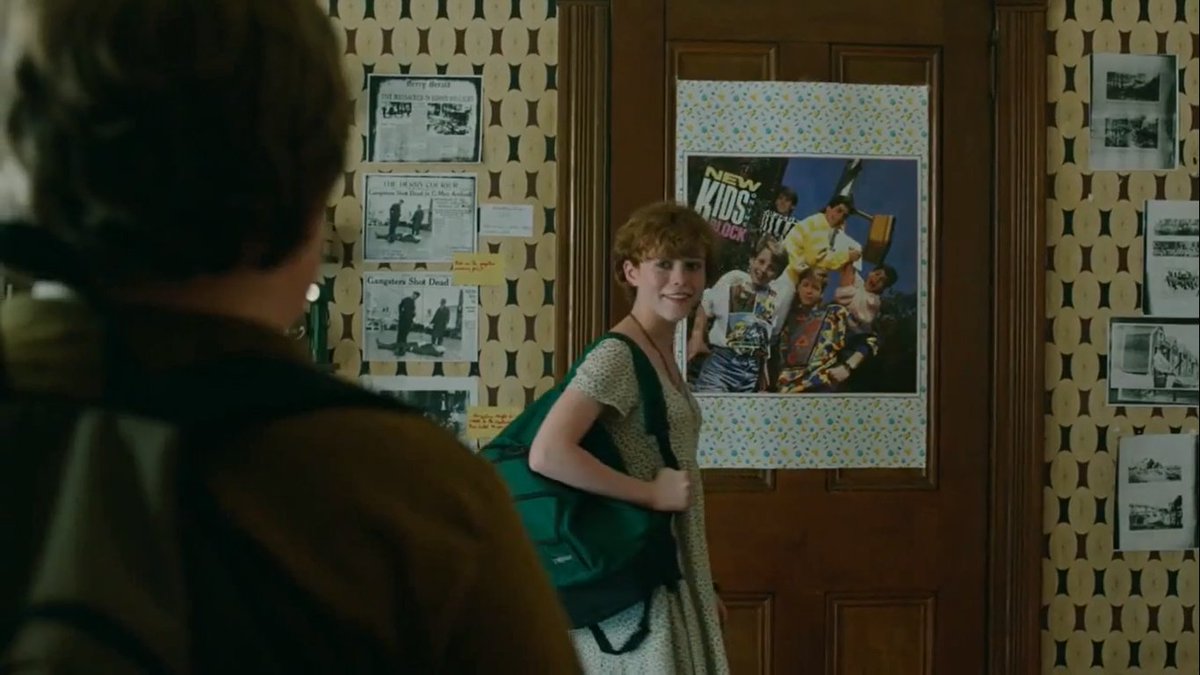
A Few Conclusions
In mid-September of 2017, I stood in front of my first class of the day and wrote the word “kairos” on the board while Macklemore’s “Same Love” music video loaded on the computer behind me. The lesson went as usual over the next 55 minutes, and I left the classroom thinking about how the example only clicked for about half of the class. I walked outside to make a call, and I saw a group of students from my class, standing around a black metal bench, talking, laughing, and taking pictures on their phones. Just between their heads, I could see a single red balloon tied to the arm of the bench. Over the next hour, I would see several pictures of single red balloons tied to benches, tables, and art installations around campus pop up on social media, and then it dawned on me. Something about IT resonated heavily with the generation I was working with, and it can be attributed to many things from the vast marketing campaign that sold the film, to the established symbolism of the clown and balloon, and the nostalgia of the ‘80s when the film took place and the ‘90s when the original adaptation was released.
Many of these students were not born when either of these texts were unleashed on the public, and I would be willing to bet the majority of them have never read the novel or seen the Tim Curry film in its entirety, but something rang true for them. Something about the atmosphere of the late 20th century was being injected into the early 21st century cultural landscape through our entertainment that would summon a form of nostalgia that is best summed up by the German word “Sehnsucht.” Sehnsucht’s closest translation in English is “yearning” or “pining” for something that is imperfect or incomplete, and it’s often used to describe nostalgia for something that someone has never experienced. Tapping into nostalgia is a common marketing tactic for every product imaginable, but King’s IT is a unique case because it saw an unprecedented amount of success for a horror film during a time when the genre was saturated with many paint-by-numbers and incredibly innovative titles such as Annabelle: Creation and Jordan Peele’s Get Out, respectively. Released at any other time, IT would most likely see praise from the fans of King and the original adaptation, but King’s multi-media success in 2017 combined with the zeitgeist of nostalgia of the 2010s to create the absolute kairotic moment for a flawed, fairly generic horror film to receive mass recognition with a generation of people that would collectively spend millions of dollars in part due to a feeling of sehnsucht. The same moment would drive me to consider replacing Macklemore’s iconic hip-hop song about same-sex marriage from two years earlier with a horror movie trailer, full of scary clowns and balloons, that would better utilize the kairos of 2017.
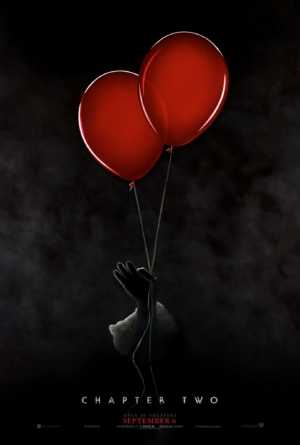
Stephen King’s name fades in and out of the headlines with his ongoing shows, occasional novels, and, most prominently, the anticipation of IT: Chapter Two that is set to debut in theaters on September 9, 2019 – almost exactly two years after chapter one. The trailer sits at just over thirty-eight million views on YouTube around three months before its release (Warner Bros. Pictures). King’s sequel is poised to be just as successful as the 2017 outing as the story of the Losers Club will now be set the year 2016, opening up the possibility to play with history and time in more creative ways. This release will likely continue the wave of nostalgic narratives that dominate our current taste in entertainment, but it also has the opportunity to engage critically with the complexity of our memory and imaginings of the past – the crux of nostalgia that helps to form our sense of self and is often weaponized against those that do not fit communities we have formed. In this way, it’s important to celebrate the creativity of nostalgic story-telling, but it’s equally important for us to take the time to consider our current moment – the kairos of the present, and determine how we want to receive and react to this stream of remakes, reboots, sequels, and original stories from the ‘80s and ‘90s to ensure that they are used as healthy tools of making meaning and identity formation instead of allowing them to skew images of times that delivered traumatic discrimination and inequality for people who continue to suffer. With critical engagement, we can begin using these pieces of entertainment to tell intriguing stories of the past that utilize nostalgia as a tool to draw audiences while simultaneously correcting narratives that may have been blurred through the same rose-colored glasses to assist in unifying our fractured society.
Works Cited
“Google Trends: Stephen King.” Google, 2 July 2019, https://trends.google.com/trends/explore?date=all&geo=US&q=stephen%20king.
IMDb. IMDb Inc., 2019, https://www.imdb.com. Accessed 27 June 2019.
Metacritic. CBS Interactive Inc., 2019, https://www.metacritic.com. Accessed 27 June 2019.
Rotten Tomatoes. Fandango, 2019, https://www.rottentomatoes.com. Accessed 27 June 2019.
Routledge, et al. “The Power of the Past: Nostalgia as a Meaning-Making Resource.” Memory, vol. 20, no. 5, 2012, pp. 452-460. Accessed 27 June 2019.
Tudor, Deborah. “Selling Nostalgia: Mad Men, Postmodernism and Neoliberalism.” Society, vol. 49, no. 9, 2012, pp. 333-338. Accessed 27 June 2019.
Warner Bros. Pictures. “It Chapter Two-Official Teaser Trailer [HD].” YouTube, uploaded by Warner Bros. Pictures, 9 May 2019, https://www.youtube.com/watch?v=zqUopiAYdRg.
What do you think? Leave a comment.











Sadly, I’m old enough to remember the 1980s.
Back then, everything was about the 60s, whilst the 70s was seen as a cringeworthy cultural horror show. Then in the 90s, the 70s were rebooted as a glam utopia, while the 80s was a laughable time of shoulder pads and housebrick sized mobile phones.
Odd though, that the 80s nostalgia seems to have been around for the past 15-20 years; still waiting for a raft of films/TV shows set in Seattle coffee shops full of customers wearing sock hats and Global Hypercolour t-shirts, with soundtracks featuring The Wonder Stuff and Doop…
Absolutely, and the 50’s US baseball jackets, live rockabilly bands at events like RAR and such. The 80’s in in the cultural news because that and the generation that followed are now in power, and writing about the stuff.
Please, please, please… Do not ever do a remake of Back to the Future! Still my favourite movie of all time and if you watched it now it’s still brilliant and doesn’t seem dated. =)
It’s weird how they managed to get such authentically 1980s actors. There’s something about how skinny and unhealthy looking everyone is that just makes it perfect for the era in a way I can’t quite figure out.
Not to say that being skinny is unhealthy and I understand the body image distortion we’ve all gone through since then but… It’s weird how eighties everyone looks rather than being super-polished and buff millennials in eighties costumes.
Millie Brown is a real talent.
No mention of the most obvious influence on Stranger Things – John Carpenter. Both visually, and in the music, which was what a lot of people who I talked to about the series mentioned. The posters in the kids’ bedrooms were a bit of a hint.
This is a great connection! I considered adding some material about Carpenter’s work when I was drafting, but I couldn’t make the point fit the way I would have liked. I do think it’s very important to acknowledge his influence because it is felt so heavily in the nostalgic horror and sci-fi films and shows to this day.
Nostalgia is a funny thing.
I have a co-worker who is convinced everyone was happy in the 80s and a Nan who thinks the sun used to set later when she was young.
The late 60s when I was in my teens do seem to have been a high point of liberal culture and harmony.
Nostalgia isn’t always a good thing. Wistful reminiscing about the days of Empire, war with France and slavery certainly contributed to the majority of the Brexit votes.
We seem to live in a creative atmosphere of safe options, proven formulas and financial accountability rather than innovating and creating new ideas.
I think you’re right for the most part, and it is disappointing that larger production companies are not taking more creative risks, but I do like to see how shows like Stranger Things use those formulas while pulling them, even just a little, in new directions. I would definitely like to see more risk-taking overall, though.
Is nostalgia that new? I was a kid in the 70s and TV was full of nostalgia for the second war (Dad’s Army, Colditz, Secret Army, plus Where Eagles Dare, Kellys Heroes etc at the cinema). Not quite nostalgia but many Victorian novels are set at about the time of the author’s early childhood (Thomas Hardy, George Eliot, lots of Dickens, not to mention War and Peace – Tolstoy was born in 1828 but grew up on stories of the war).
This is an excellent point! Nostalgia is certainly not a new theme/subject being employed and explored in current media, but I think it’s interesting how heavily it is dominating our zeitgeist when we have more access to media than ever before. I’m sure there were periods in which nostalgia worked in similar ways, but I think the 21st century is markedly defined by nostalgia in many interesting ways.
But those Victorian novelists used that original motivation as a springboard for a creative, inspired, profound vision, as opposed to just producing nostalgia-porn. A key theme of Hardy for example is the tension between the liberation of modernity and the comfortable certainty of the past. He isn’t didactic about it, he just presents it as a conundrum, and anybody interested in understanding the dilemma of losing touch with the past while embracing the future should read him. Especially Brexiters.
80’s is the most beloved decade currently. Presumably because the people who were kids and teenagers in the 80s are now the ones who are making the new movies and shows. In ten years’ time – gasp! – the 90s will be the decade to which contemporary products are looking back.
This is a great observation, and I think we are already moving in that direction with the increased popularity of shows like Friends that are embedded in 90s culture. It will be interesting to see how the media landscape shifts in the next decade and how we adapt to it, culturally.
90’s fashion is already making a come back.
Can I go back 10 years, please? I missed the re-run of the 70s.
You mean you missed Starsky and Hutch, Charlie’s Angels, Halloween, Poseidon, Battlestar Galactica, Dawn of the Dead, Scooby-Doo, Dark Shadows, Freaky Friday, Gone In Sixty Seconds, The Longest Yard, I Spit On Your Grave, The Taking of Pelham 123, When A Stranger Calls, The Dukes of Hazzard, The Bad News Bears, Sleuth, The Omen, Get Carter, The Hills Have Eyes, Fat Albert, Escape to Witch Mountain, Josie and the Pussycats, The Wicker Man, Land of the Lost, Last House on the Left, Fun With Dick And Jane, The Amityville Horror, Assault on Precinct 13, Rollerball and The Stepford Wives?
Because I’m pretty sure you can watch most of those on Blu-Ray.
I don’t think that 10 years ago there was such a strong 70s revival in tv / cinema themes – it’ll be interesting to see if it does move forwards though and the 90s comes around, but I suspect not. There is something about the films of the 80s which didn’t exist in other decades, and it dies capture people – as mentioned in the article it’s not just appealing to those who grew up in the 80s, it’s being passed on to later generations. I for one have been enjoying it being back in tv shows like Stranger Things.
I am 58, living in England, right through the 80s was brilliant. Everyone seemed to have a job, Friday and Saturday nights were big dress up nights. Even on a Saturday daytime you would get togged up to go down town. I think guys had more respect for girls back then, they seemed to act and dress more classy. Hitting the Mediterranean was a big thing, also getting a flat and buying a house. The music was awesome and their wernt as many big heads around. I can’t see it coming back’
It’s awesome to hear that you had that experience! Similar to what I noted in the article, I believe there are great aspects of each decade that fade with time, but, in the U.S. in particular, it’s very contextual based on socio-economic class, gender, race, sexual-orientation, etc. I know several people in my family and my friends’ families that have dramatically different recollections of the 80s based on the communities they were part of. It’s endlessly fascinating to me to examine how differently we can interpret and relay history based on all of those factors, and it makes for great conversations.
No Internet, mobiles in their infancy, once you left the house no one knew where you were.
Stranger Things is expressly designed for people who have 80s nostalgia but where never actually there. It’s not bad by any means, but as someone born before 1990 I have actual memories of seeing Flight of the Navigator in the cinema, and remember it being a big deal for us kids the first time The Goonies was shown on LWT.
Stranger Things tries to tap into that but ends up just reminding me of all the better stuff it’s ‘homaging’. (Better stuff plus Flight of the Navigator.)
I love this point! It’s interesting how some shows and films actually delve into the complexities of different decades while others tend to pay homage to them more generally by depicting surface-level symbols of those times. I think there’s a place for both types of narratives, but I tend to lean more in the direction of stories that actually dig deeper into the times themselves.
Modern television was born in the MTV 80s.
Nostalgia always remain in minds, but this decade is a forgotten decade…
I see your point, but I think the political turmoil in the U.S., the prevalence of social movements (BLM, #MeToo, etc.), and the threat of climate change are going to be the markers for the 2010s. Only time will tell, but these are certainly the big moments that are sticking in the mind of my community. Thank you for reading!
I’ve always loved 80s movies having grown up on them, national lampoons vacation, empire strikes back, lost boys, desperately seeking Susan, hear no evil see no evil, woman in red, soul man, running man, weird science, predator, the list goes on..
At some point we lost the hopefulness and the innocence that period captured. In those days there was no al queda, more positivity about where the world was heading-even in music, such as the pixies, Bowie, prince. People had more money(reganomics).
Is it any wonder we don’t want to watch movies set in our modern day world?
Your point is really interesting because when I watch movies from the ’80s, I have that sense of nostalgia that I never experienced, but knowing the crises occurring at the time and the decade that followed, I see them as more tragic in some way. It almost seems as if filmmakers were attempting to provide an overly optimistic outlook for the future to distract from the current and expected conflicts (domestic and international). This is most likely hindsight bias kicking in, but I do enjoy a lot of ’80s movies regardless. Thanks for reading!
I detest nostalgia. Always viewed thru rose tinted glasses. Experiences are good because they’re good. Got nothing to do with when they happen but everything to do with them happening at all. When people say “oh that defined the era” I want to leave.
Detesting nostalgia seems like a really odd reaction to a fairly natural human phenomenon. We mark out our whole lives through the prism of time – it has a defined start and end, and we do some stuff in the middle.
It’s the ‘stuff in the middle’ that transforms our life from a meaningless, forgettable series of instantly-disposable things to a memorable, meaningful narrative, none more so than when we’ve shared those moments; with parents, friends, family, colleagues etc.
We then look back at them, enjoy those shared moments, and in the sharing we make them memorable again. Of course that has a lot to do with what happened, but it’s utterly rooted in time. Reminiscing about a great gig, a wedding, a to programme, an album, an event etc is great, and for those involved can be utterly era defining.
Which is no bad thing.
I couldn’t agree more! Thank you for reading, and thank you for your input!
We all react to nostalgia differently, and I know plenty of people that have a similar reaction when hearing about era defining trends, media, and/or movements. I would say that completely ignoring the time in which events occur and different media is released removes context that is necessary to fully understand them. For example, I don’t think iconic bands such as The Beatles, Van Halen, or Nirvana would receive the same accolades if they released their music outside of their respective decades. They may very well have been positively received, but the impact would not have been the same because the music industry and culture evolved into a form that was primed for their sounds. Again, I completely understand your reaction, but I think it’s important to consider timing when discussing or examining media. Thanks for reading!
The people who were kids in the 80s are now tv and film producers harking back to the iconic in their childhoods.
I absolutely agree! We can see the same thing happening in other industries as well. It’s especially interesting with video games like God of War and The Last of Us that heavily rely on themes of parenthood and aging. Thank you for reading!
I think that to a large extent it probably is the case that the people who would have been kids in the 80’s are now making the movies–or, alternatively, the ones who have the most buying power to decide which movies get made, and are thus considered most worth catering to.
I wonder, as well, if some of the “nostalgia” exhibited by kids who weren’t old enough to remember the 80’s, is that the kids in movies like IT seem somewhat freer, and more grown-up, than they are. The kids in the movie have dysfunctional home lives, yes; but they still get to go out in nature and wander around the town by themselves, whereas most kids of the 90’s and after have spent most of their time either going to various supervised activities or staying at home on their computers. Movies like IT give them a glimpse of another kind of childhood and maybe function as wish fulfillment in that sense.
I think the changing norms of childhood that you point out are extremely important for this conversation because I’m sure they directly affect the ways in which we tend to indulge in narratives of the past. Thank you for reading!
“It”’s resonance with choice audiences could be found in its dissection of nostalgia.
Many of the media examples cited (most notably “Stranger Things”) forward the remembered aesthetics of the 1980s, while the less savory elements parallel to and even baked in to those aesthetics (hyper-consumerism, racial ignorance, homophobia) are ignored. This results in the decade being lionized and the issues that persist in the U. S. today are allowed to fester.
“It,” however, acts as a deconstruction of the current trend in 80s nostalgia by addressing the social issues of the era. The child disappearances (murders in the original novel) at the hands of a murderous space clown monster reflect a serious concern with child abductions in the 1980s following high profile vanishings. Additionally, Pennywise’s seeming use of magical influence to keep adults satiated from helping his victims mirrors the use of systematic structures to keep a mainstream majority from feeling the effects of the racially charged “war in drugs” or the AIDS crisis.
In short, the movie uses the titular monster as a metaphorical familiar for social issues of the 1980s, albeit subtly, setting itself apart from its more “restorative” companion works. Granted, it’s difficult to say if these motivated thematic elements had an immediate effect on initial sales, but I believe they will ensure a continuing life after this era of 80s nostalgia fades.
But, I digress. Greta, provocative article!
Much thanks! Your breakdown is very eloquent, and I 100% agree.
hmmm
A good essay and an interesting discussion of the word “nostalgia.”
Thank you! I’m glad you enjoyed it, and I believe it’s creating a good conversation.
There could also be something about the political climate the US is currently in and the end of the decade being a time of reflection for many people born in the 90s to early 00s. A time of transition (whether it be into adulthood, adolescence, graduation) where global communication has made us all so saturated to information access we weren’t born into has turned us to ‘simpler’ times of limited internet access (broadband connection) and where brick-and-mortar retail wasn’t as doomed as it appears in this decade.
Apologies for digressing here from the points you have covered but the first thought that always comes to my mind (and which I keep thinking about later: for example, here) when anybody brings up Stephen King is how awesome his non-horror works are when adapted to the screen. Case in point being ‘The Shashank Redemption’ and ‘The Green Mile.’
iliked both the original and the new one they were both really scary and i think it shows how we should face our fears and deal with grief